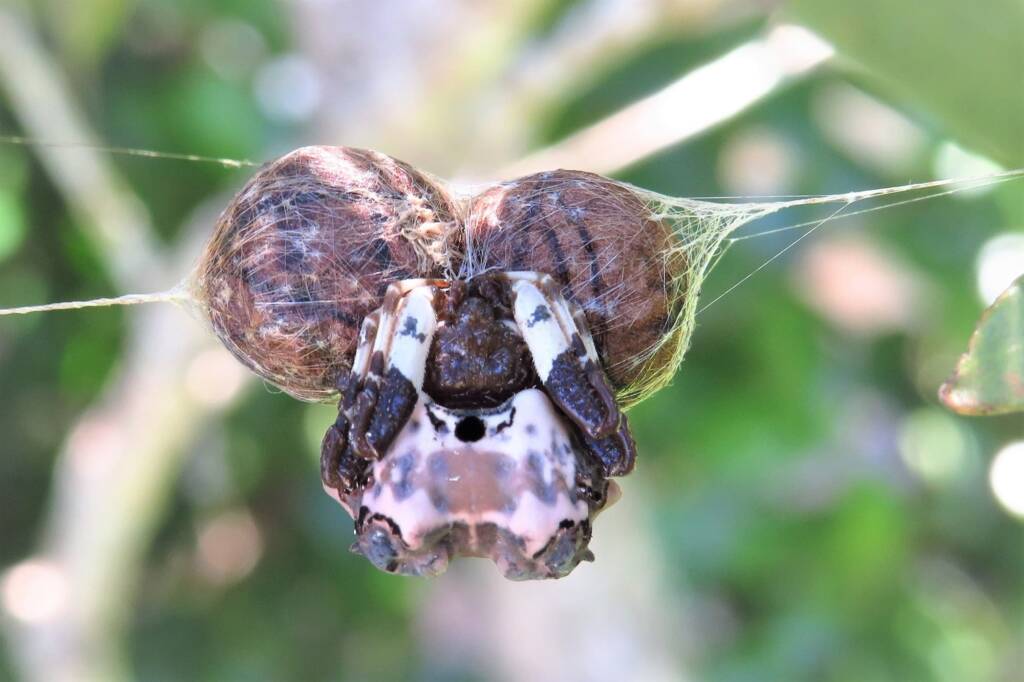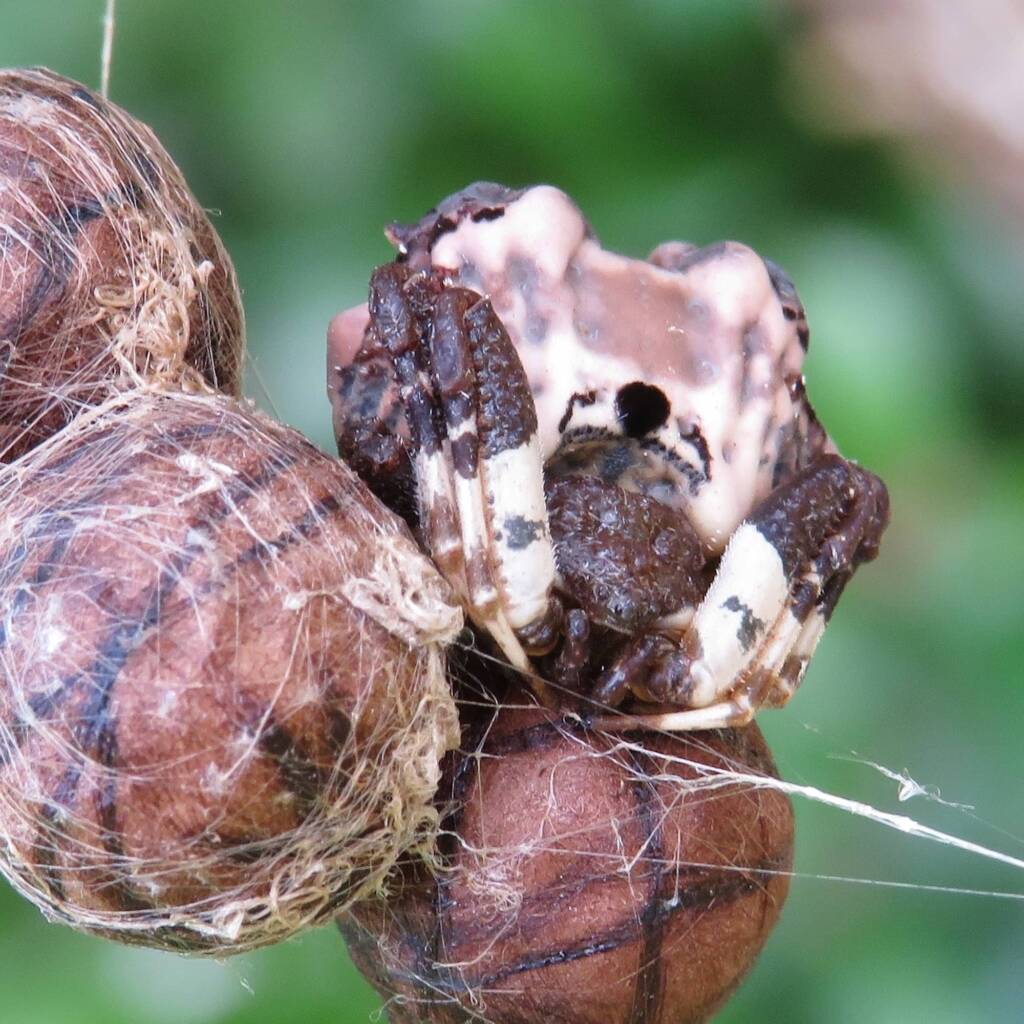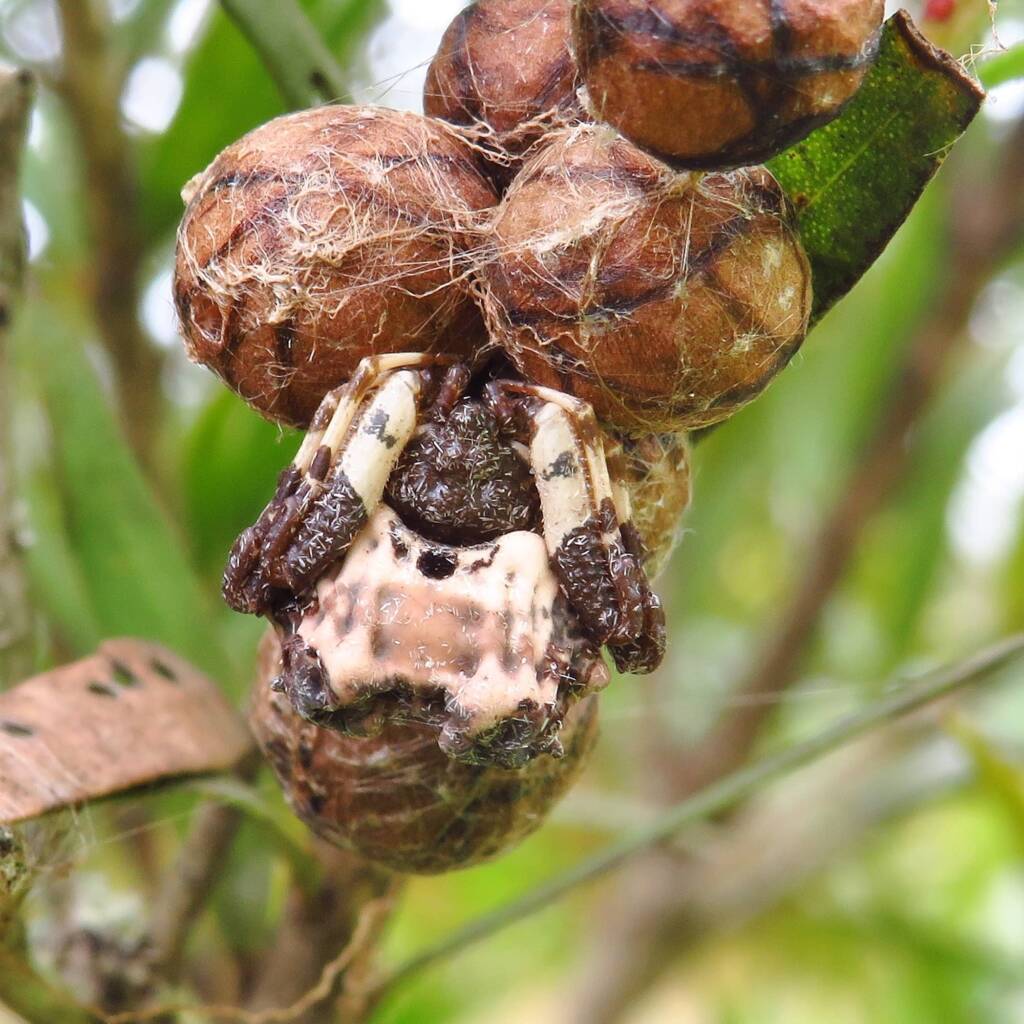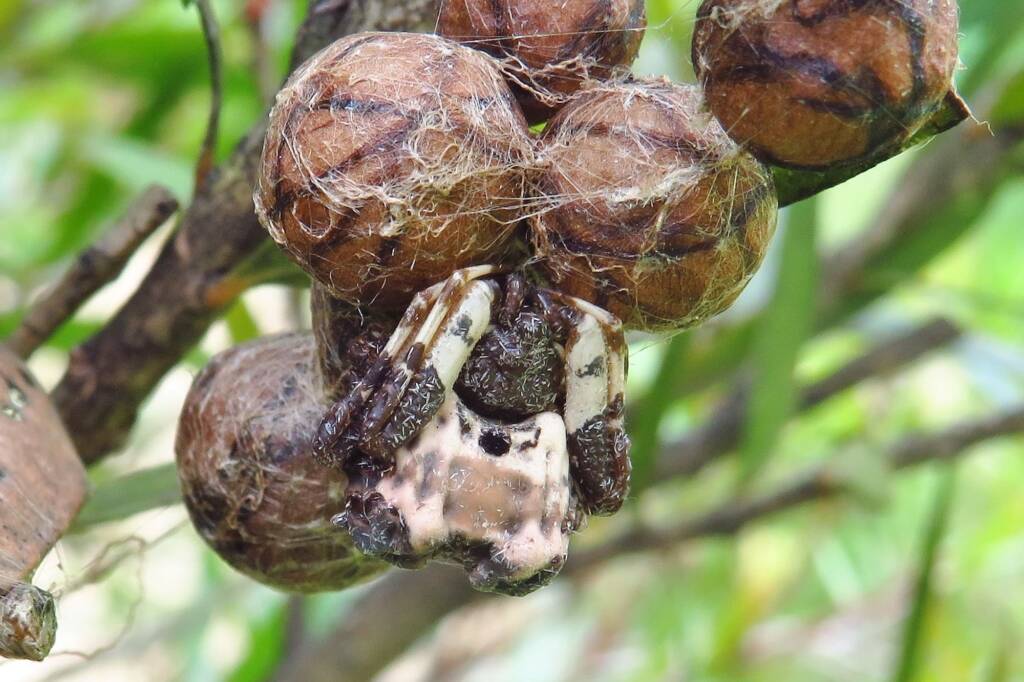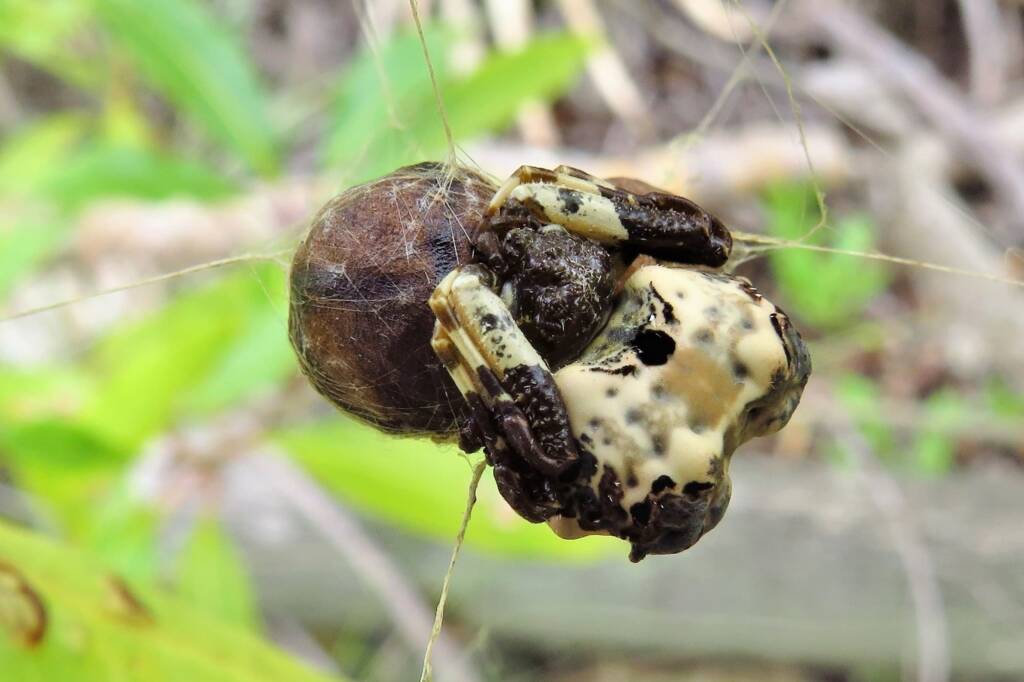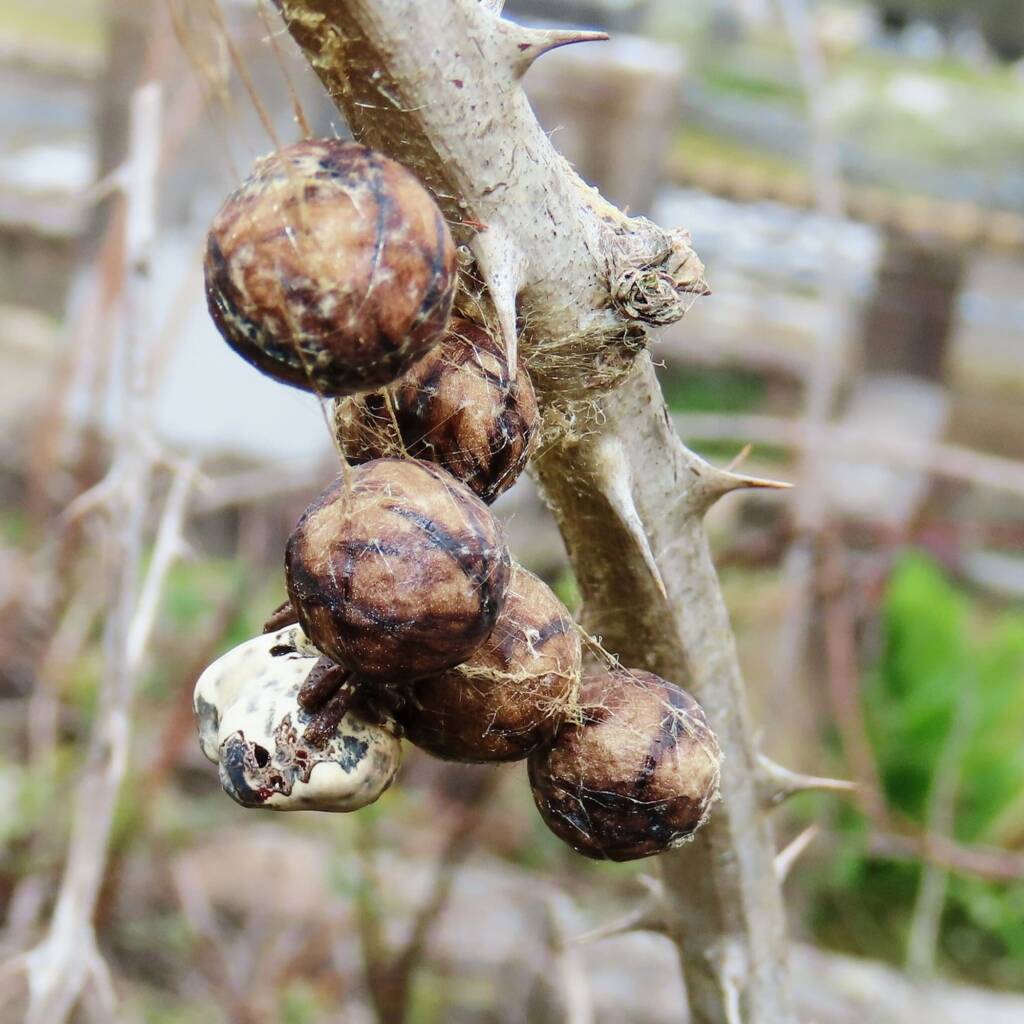Celaenia spCommon Bird-dropping Spider (Celaenia excavata)
There is a group of spiders whose camouflage is quite extraordinary, resembling a bird dropping, hence their common name of Bird-dropping Spiders and Bird Dung Spiders. This form of camouflage is referred to as mimicry and enables them to avoid being eaten by birds and wasps. One of the species that is commonly seen is Celaenia excavata (Common Bird-dropping Spider).

This particular species Celaenia excavata is also known as the Death’s Head Spider, due to the markings that is said to resemble that of a skull (when viewed from above). It is also known as the Orchard Spider, because it is often seen on fruit trees where it sits and waits for the moths, that frequent these trees.
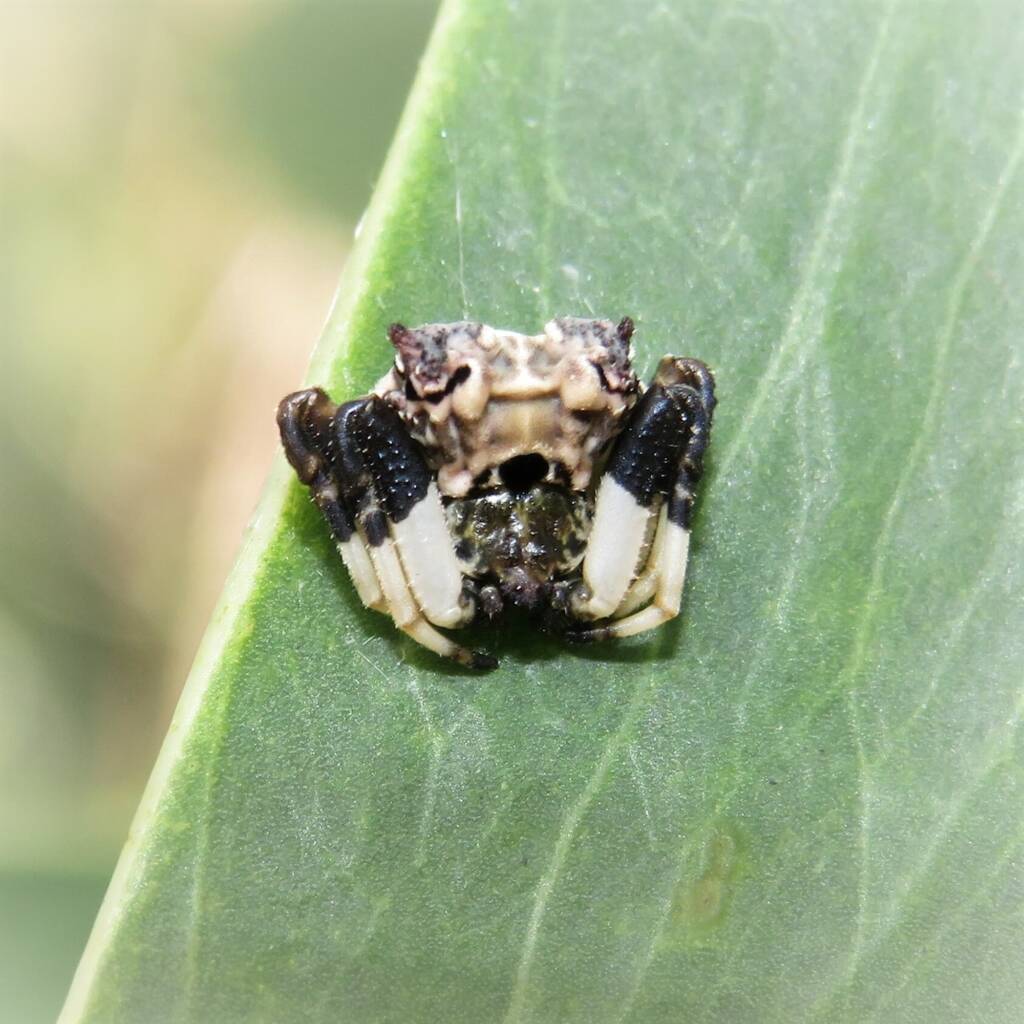
As well as avoiding becoming prey, the Bird-dropping Spider uses mimicry to capture prey, in particular male moths. Usually at night, the Bird-dropping Spider will hang from the edge of a leaf or twig on a short silk thread with its forelegs outstretched. The spider then releases a chemical scent (pheromone) that mimics the sex pheromone released by female moths to attract their mates. When the male moths come to close, the spider quickly captures the prey.
Young Bird-dropping Spiders will often make a web, whilst the adult female relies on direct attack to catch their prey.

The male of the species are tiny, with abdomens that measure 2.5 mm long, whilst the females can be up to 2 cm long.
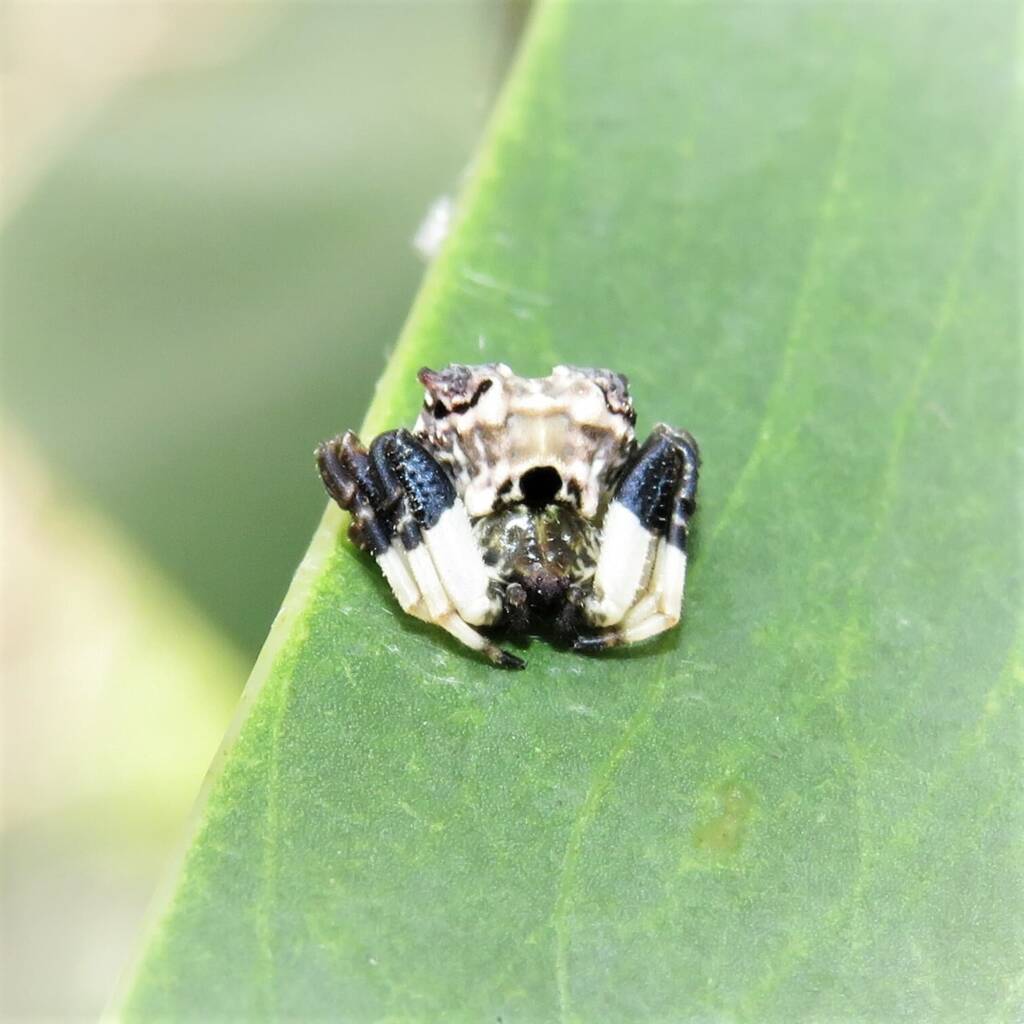
The female Bird-dropping Spider will make ball shaped egg sacs, about 10 mm in diameter, that are loosely held together by webbing. There can be up to 10 sacs that are grouped together, containing hundreds of eggs and often with the female sitting with the egg sacs or nearby.
- Scientific classification
- Kingdom: Animalia
- Phylum: Arthropoda
- Subphylum: Chelicerata
- Class: Arachnida
- Order: Araneae
- Infraorder: Araneomorphae
- Family: Araneidae
- Genus: Celaenia
- Species: Celaenia excavata
Footnote & References
- Photographs Common Bird-dropping Spider (Celaenia excavata) © Deb Taylor
- Common Bird-dropping Spider (Celaenia excavata), debtayor142, iNaturalistAU, https://inaturalist.ala.org.au/observations?place_id=6744&subview=map&taxon_id=409761&user_id=debtaylor142&view=species
- Common Bird-dropping Spider Celaenia excavata, iNaturalistAU, https://inaturalist.ala.org.au/taxa/409761-Celaenia-excavata
- Celaenia excavata (L. Koch, 1867), Atlas of Living Australia, https://bie.ala.org.au/species/https://biodiversity.org.au/afd/taxa/e9f5efc2-9a69-4434-9473-9167f3786e4b
- Bird-dropping Spider, Australian Museum, https://australian.museum/learn/animals/spiders/bird-dropping-spider/
- Bird-dropping Spider – the Mimic Master, Brisbane Insects and Spiders, https://www.brisbaneinsects.com/brisbane_weavers/BirdDroppingSpider.htm
- The bird-dropping spider is the best, by Bec Crew, 23 August 2021, Australian Geographic, https://www.australiangeographic.com.au/blogs/creatura-blog/2021/08/the-bird-dropping-spider-is-the-best/
Celaenia spCommon Bird-dropping Spider (Celaenia excavata)
SpidersIndex of Spider Images Spiders in Australia Araneidae — Orb Weavers Arkys Australian Huntsman Spider Barking Spider Black House Spider Carepalxis sp Celaenia sp Crab Spiders Deinopidae — Net-casting Spiders Dolomedes sp Dolophones sp Flower Spiders Hackled Orbweavers (Uloboridae) Jewel Spider Jumping Spider Long Jawed Spider (Tetragnatha sp) Lynx Spider (Oxyopes) Mangrovia albida Maratus volans Missulena occatoria (Red-headed Mouse Spider) Miturgidae Nicodamidae (Red and Black Spider) Ogre-faced Net-casting Spider Poltys sp (Twig Spider) Redback Spider Scorpion-tailed Spider (Arachnura higginsi) Thomisidae Tiger Spider (Trichonephila plumipes) White-spotted Swift Spider (Nyssus albopunctatus) Wolf Spider

